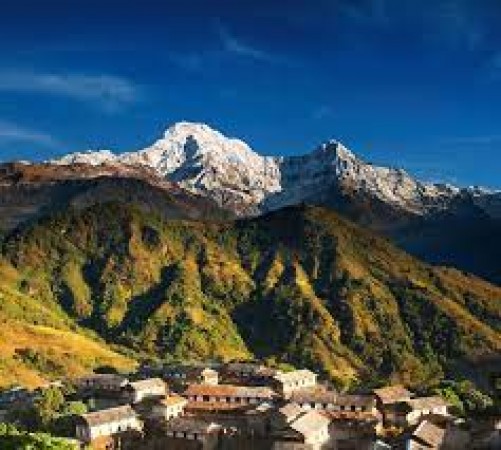
Nestled in the heart of the Himalayas, the Annapurna mountain range stands as a towering testament to nature's grandeur and the indomitable spirit of exploration. Named after the Hindu goddess of food and nourishment, Annapurna not only offers breathtaking vistas and formidable climbing challenges but also weaves a tapestry of cultural heritage and spiritual significance that captivates the hearts of adventurers and pilgrims alike.
As one of the world's most iconic mountain ranges, the Annapurna massif spans across Nepal and touches the sky at its highest point, Annapurna I, standing at an elevation of 8,091 meters (26,545 feet). The range comprises a series of majestic peaks that extend over 55 kilometers, creating a dramatic landscape that entices climbers, trekkers, and nature enthusiasts from around the globe. Beyond its physical splendor, the Annapurna region is a cultural mosaic where ancient traditions and modern exploration converge. Home to various indigenous communities, such as the Gurungs, Magars, and Thakalis, the area offers a unique opportunity to immerse oneself in the rich tapestry of Nepalese culture. Villages with intricately carved stone houses, prayer flags fluttering in the breeze, and monasteries adorned with vibrant murals paint a vivid picture of the region's spiritual and communal essence. The Annapurna Circuit, a renowned trekking route, circles the Annapurna massif, taking trekkers on a transformative journey through diverse landscapes and altitudes. From terraced fields and rhododendron forests to high mountain passes and arid landscapes, the circuit showcases the breathtaking spectrum of nature's beauty. Trekkers also have the opportunity to interact with local communities, forging connections and gaining insights into the lives of those who call this rugged terrain home.
Climbing the peaks of the Annapurna range demands unwavering determination, technical expertise, and a deep respect for the mountain's unpredictable nature. Annapurna I, the crown jewel of the range, presents climbers with a challenging ascent that requires a combination of mountaineering skills and an understanding of the mountain's complex weather patterns. While the rewards are immense, the risks underscore the mountain's reputation as one of the deadliest in the world. For many, the allure of Annapurna transcends the physical challenge, resonating with a spiritual yearning to connect with nature's majesty. The mountain range holds spiritual significance for both Hindus and Buddhists, embodying a sacred presence that evokes reverence and awe. Pilgrims and trekkers often find solace and introspection amidst the serene landscapes, forging a deep connection with the cosmos and the mysteries of existence. As the Annapurna region continues to attract a growing number of visitors, the need for responsible tourism and conservation becomes paramount. Efforts to preserve the area's natural beauty, protect its biodiversity, and support local communities through sustainable practices are essential to ensure that future generations can continue to experience the magic of Annapurna.
Annapurna's peaks, valleys, and communities offer a symphony of experiences that resonate with both the intrepid adventurer and the introspective seeker. It is a realm where human aspiration converges with nature's splendor, where tradition and modernity harmonize in a dance that transcends time. As the sun sets over the rugged landscape, casting a warm glow upon the peaks, one cannot help but marvel at the enigma of Annapurna—a realm of majesty and mystery that leaves an indelible mark on all who venture into its embrace.
Also read - Assam Gov's Initiative: Ropeway Project Set for Kamakhya Temple